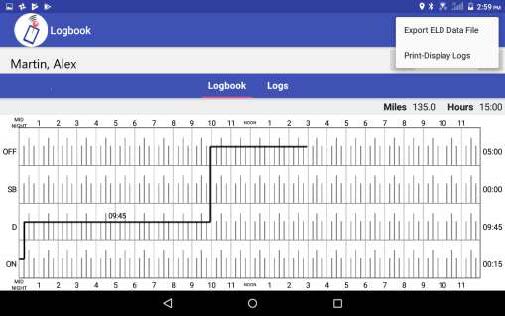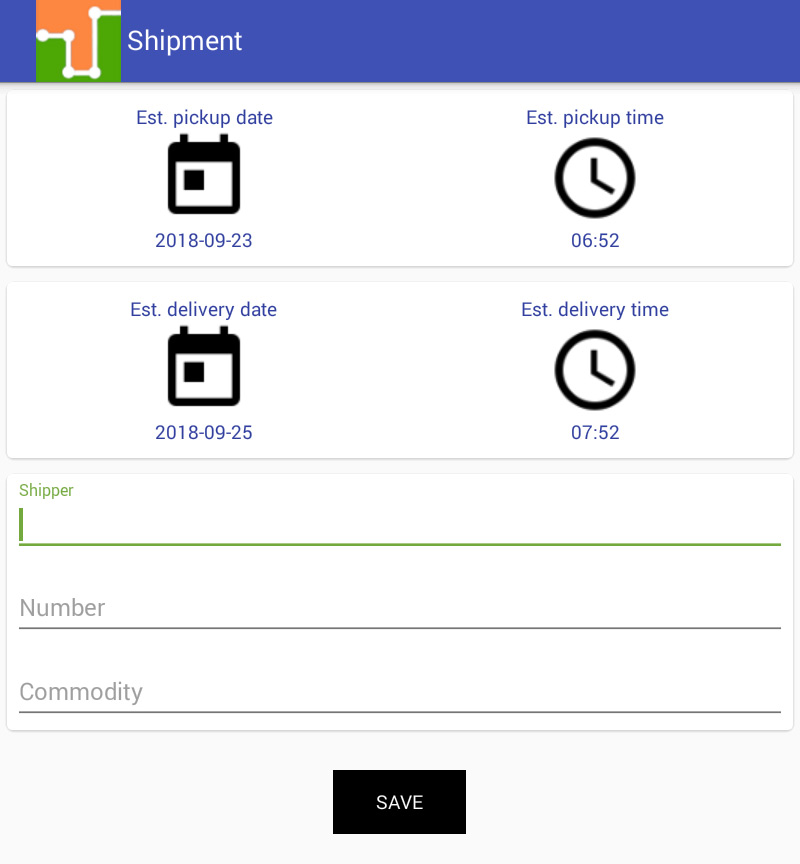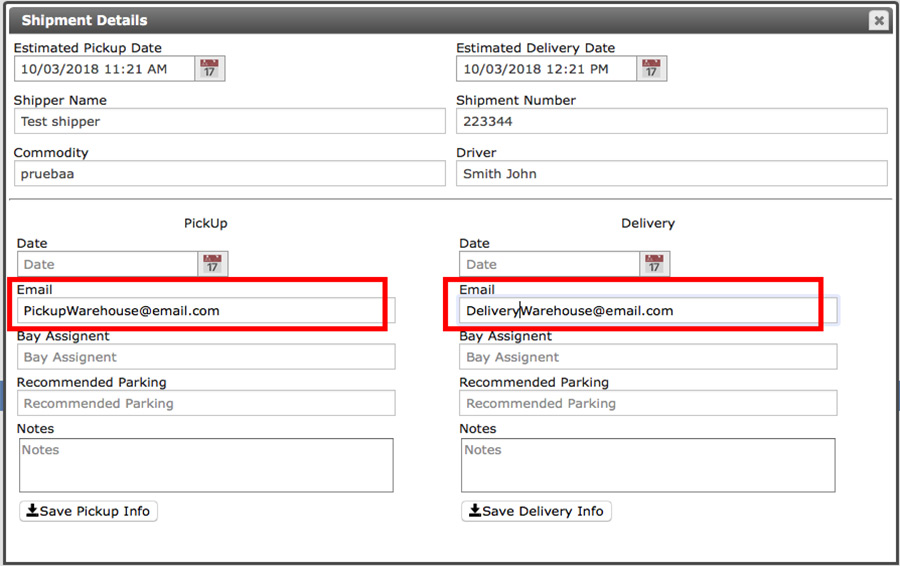
ELDS.
ZERO Paper.
Inteletrack offers an FMCSA certified solution highlighting a simple, easy-to-use touchscreen (via tablet or mobile phone) application that keeps you current with the ever-changing DOT rules. For an ELD to be used to record Hours of Service (HOS), it must be DOT-certified. The ELD mandate requires all commercial vehicles to have an ELD device fitted to replace the previous paper logbook systems.
“Hours of service” refers to the maximum amount of time drivers are permitted to be on duty including driving time, and specifies number and length of rest periods, to help ensure that drivers stay awake and alert. In general, all carriers and drivers operating commercial motor vehicles (CMVs) must comply with HOS regulations found in 49 CFR 395.
Drivers simply log in to the app. The ELD is connected directly to the vehicle, so once the truck begins to roll, their hours are automatically tracked.
No worries. No hassles
How Do ELDs Work?
ELDs are designed to communicate with a vehicle’s ECU (engine control unit) that will gather current engine status as well as provide detailed GPS location. This data is sent to a logging device or an app that DOT officials can view at a roadside inspection.
When Did ELDs Become Federal Law in the United States?
ELDs were mandated by the FMCSA (Federal Motor Carrier Safety Administration) in December 2017. An extension was granted until December 16, 2019 for fleets using older AOBRDs (automatic on-board recording devices), EOBRs (electronic on-board recorders) and E-Logs. Despite slight variations, the central function of all these devices is to electronically record a commercial driver’s activity and log HOS (Hours of Service), also known as RODS.
Who is Required to Have ELDs?
The ELD Final Rule applies to commercial interstate truckers (including owner operators and small carriers), bus drivers, and most motor carriers who are required to maintain RODS and HOS. Those who meet the requirements based on weight or activity to record duty status information are also required to comply. A general “rule of thumb” to consider is that if you’ve used paper logs for RODS or HOS in the past, you should confirm with your governing DOT (Department of Transportation) if the rule applies and understand what it would take to get ELDs working for your fleet.
HOS Final Rule
On June 1, 2020, FMCSA revised four provisions of the hours of service regulations to provide greater flexibility for drivers without adversely affecting safety. Motor carriers are required to comply with the new HOS regulations starting on September 29, 2020.
For an ELD to be used to record Hours of Service (HOS), it must be DOT-certified. The ELD mandate requires all commercial vehicles to have an ELD device fitted to replace the previous paper logbook systems.
What Changed?

Expands the short-haul exception to 150 air-miles and allows a 14-hour work shift to take place as part of the exception.

Expands the driving window during adverse driving conditions by up to an additional 2 hours.

Requires break of at least 30 consecutive minutes after 8 cumulative hours of driving time (instead of on-duty time) and allows an on-duty/not driving period to qualify as the required break.

Modifies the sleeper berth exception to allow a driver to meet the 10-hour minimum off-duty requirement by spending at least 7 hours of that period in the berth combined with a minimum off-duty period of at least 2 hours spent inside or outside the berth, provided the two periods total at least 10 hours. When used together as specified, neither qualify period counts against the 14-hour driving window.
At a glance, drivers can instantly see their current duty status displayed on a tablet or smartphone.

Access Daily Logs Online. Anytime.
- Includes Fleet Tracking to Improve Safety, Accountability and Efficiency.
- Large Display and a Colorful, User-Focused Interface
- Multi-Lingual, 24 Hour Support Available
- Vehicle Defects Can Be Captured and Uploaded Instantly
- Manage Drivers via the Online Portal Including Current Driver Status
- Checklist Style Driver Forms


Drivers can export HOS eLogs directly from the app.
Our mobile apps, available in both Android and iOS, are simple platforms that provide your drivers a streamlined ELD and DVIR into a single solution. This option can be added on to your existing smartphones and tablets and managed online through the Inteletrack web portal. If you don’t have tablets, we can source ruggedized tablets that will power on automatically upon vehicle ignition.
The GPS tracking device connects via Bluetooth to any mobile device, so put compliance without compromise to work for your drivers, your vehicles and the office.
- Alerts and notifications of violations
- Missing logs, unassigned drive time and more
- Multiple Rule Sets available
- Optional add-ons available for fuel tax, navigation, and even engine diagnostics!
- QuickStart guide PDF for drivers directly on the phone or tablet


ELD Compliance Dashboard
- Number of delivered and in-transit loads (blue).
- Real-time driver and ELD compliance information (green).
- Pending unidentified driving records that need to be assigned to drivers, requiring attention (yellow).
- Number of HOS violations for the current month (red).
Shipment Sync
Our integrated alerts can be customized to notify specific personnel, such as dispatchers or in-house mechanics for any issues that may arise while on the road.

Drivers or office personnel can initiate a dispatch, i.e., pickup or delivery, and can update information as required including ETA. Shippers or receivers can then log in to the portal and know where the truck is and get current ETA information.



Meets local and federal regulations for USA, Canada and Mexico and supports the following rulesets:
- USA Federal regulations (60 hours / 7 days and 70 hours / 8 days)
- Cycle Hours Recap
- California, Texas, Florida Intrastate
- Oilfields
- Passenger-carrying vehicles (buses)
- Asphalt/Concrete (under short-haul exemption)
- Adverse Conditions
- Canada Cycle 1 and Cycle 2
- Canada vehicle inspection report Schedule 1
- Mexico NOM-087
Benefits of an ELD Solution
Although you may or may not be legally required to use ELDs, there are some benefits in switching to an automated fleet management and compliance solution! As drivers in the trucking industry, these benefits include:
- Improved driver safety and CSA scores
- Less driver paperwork with data readily available on the Inteletrack portal, thus simplifying operations and reducing operating costs.
- Quicker roadside checks which ensure that your drivers and vehicles are compliant, leading to greater uptime and efficient deliveries.
- Reduced costs for fuel and maintenance using optimized GPS routes
- GPS monitors for unproductive idling time and can send alerts. This leads to reduced vehicle wear and tear and improved maintenance schedules
The vast majority of CMV drivers are now required to comply with the ELD mandate. If your company is not in compliance, you’re subject to fines, violations, increased insurance rates and more. Obviously, the benefits of switching to an ELD solution far outweigh the initial costs. Contact one of our fleet experts today to learn more.

